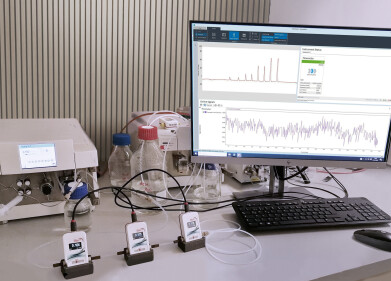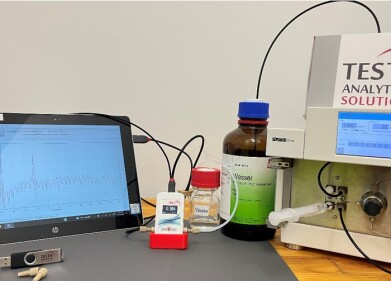HPLC, UHPLC
Why Do New-Born Babies Need Vitamin E? — Chromatography Investigates
Jul 03 2018
Vitamins and minerals are key parts of a healthy diet for people of all ages. Although the levels of vitamins are well established in adults, a recent paper published in IOSR-Journal of Dental and Medical Sciences — Newborns Vitamin E Level and Its Relationship with Retinopathy of Prematurity — suggests that the levels for new-born babies are not well known and could be a cause for concern, particularly for retinopathy. Let’s take a look at vitamin E and retinopathy through the eyes of Sheikh Sayera Khatun Medical College, Gopalgonj in Bangladesh.
Vitamin E — free radical scavenger
Vitamin E is not one single compound but rather a collection of eight compounds based around a chromane double ring, a hydroxyl group and a hydrophobic side chain. The eight compounds are found in two groups — tocopherols and tocotrienols. The most biologically active form of vitamin E is alpha-tocopherol, and this is also the second most abundant form of vitamin E found in food after gamma-tocopherol.
The groups that are attached to vitamin E help its biological activity. Vitamin E is a fat-soluble vitamin that we get mainly from plants and their oils — wheatgerm oil and rapeseed oil have two of the highest concentrations of vitamin E. The hydrophobic side-chain allows the compounds to penetrate into the membranes around cells whilst the hydroxyl group readily donates a hydrogen atom that helps vitamin E perform one of its primary roles in the body — free radical scavenging.
Vitamin E acts as an antioxidant — especially the alpha-tocopherol variant. This means that it helps to protect cells from oxidation by reacting with lipid radicals to stop damage by free radicals formed in various reactions. Various organizations recommend a daily consumption for adults of between 7 and 15 mg per day — a figure that on average we fail to meet. But what about new-borns?
Chromatography measures α-tocopherols
The team from Bangladesh measured α-tocopherol concentrations in new-borns over a six-month period. α-tocopherol concentration is the standard method for measuring vitamin E levels in humans. The team used high performance liquid chromatography with a UV detector to measure the concentration in the blood samples taken. Future developments in liquid chromatography are discussed in the article, The Evolution of Ultra High-Performance Liquid Chromatography: Expanding the Future of Separation Technologies.
From the samples analysed, the team found that vitamin E was significantly lower in pre-term new-borns when compared to full-term new-borns. They also found that vitamin E concentrations was lower in those new-borns that developed retinopathy of prematurity (ROP). Previous studies have found that pre-term babies born below a weight of 1250g are more likely to develop ROP than full-term babies. ROP is one of the most common causes of eye loss in children.
Although there are many factors that could affect an infants chance of developing ROP, the team suggest that vitamin E deficiency could be one of those factors.
Events
Jan 20 2025 Amsterdam, Netherlands
Feb 03 2025 Dubai, UAE
Feb 05 2025 Guangzhou, China
Mar 01 2025 Boston, MA, USA
Mar 04 2025 Berlin, Germany














